This post may contain affiliate links. Please read our disclosure policy.
This Kung Pao Chicken Recipe is made with tender, juicy, bite-sized pieces of chicken, sweet bell peppers, and buttery peanuts in a flavorful sweet, salty, and spicy Kung Pao sauce. Better than your favorite Chinese take-out restaurant, this amazing stir fry is ready in just 30 minutes and delicious with a side of warm rice or cooked noodles.
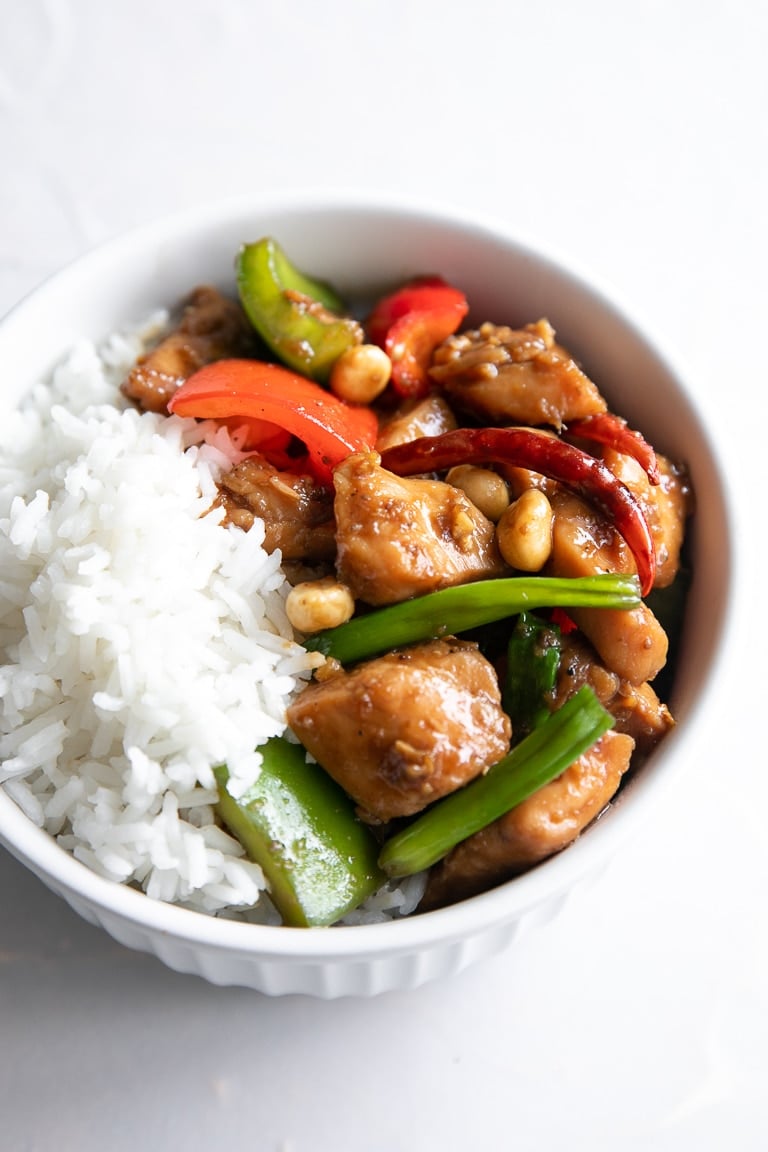
Kung Pao Chicken Recipe
Now that my son has discovered the big, bright, beautiful world of Chinese-American take-out, it’s all he wants to eat these days. I mean, who can blame the kid? Chinese take-out is so amazingly simple and flavorful, who am I to tell him no? Plus, Chinese take-out comes with a cookie that tells you all about your fortune, making it excellent bribing power for me and motivation for him.
While Kung Pao Chicken is a favorite of mine and my husband, I can’t say the same for my son, who, unfortunately, hates anything with heat (because, yes, kung pao chicken is spicy!) If you’re sensitive to spicy foods, read the recipe notes in the recipe card below for modifications.
What is Kung Pao Chicken?
The kung pao chicken we have come to love and crave today differs from the authentic version.
Originating in the Sichuan Province of southwestern China, the classic Sichuan version is always made with chicken and generous amounts of Sichuan peppercorns. Sichuan peppercorns, a popular ingredient in Sichuan cooking, produce a unique numbing or tingling flavor. This classic version is also made with dried Sichuan-style chili peppers, peanuts, and leeks as the primary vegetable addition.
The popular Westernized version of this stir fry, known as Kung Pao Chicken or Kung Po, may consist of marinated chicken with orange juice, ginger, and garlic or, as in this version, a combination of both classic ingredients (Shaoxing wine with Sichuan peppercorns) and western ingredients (ginger, garlic, soy sauce, bell peppers).
Is Kung Pao Chicken Spicy?
Yes. Authentic Kung pao chicken recipes are definitely spicy. The heat comes from,
- Whole dried red chili peppers
- Sichuan Peppercorns
If you’re sensitive to spicy foods, reduce the total amount of whole red chili peppers by at least half (or completely if you’re really sensitive). Although the Sichuan Peppercorns aren’t necessarily hot, they do offer a tingling effect (which I love) but be sure to reduce by half if you’re sensitive to new foods.
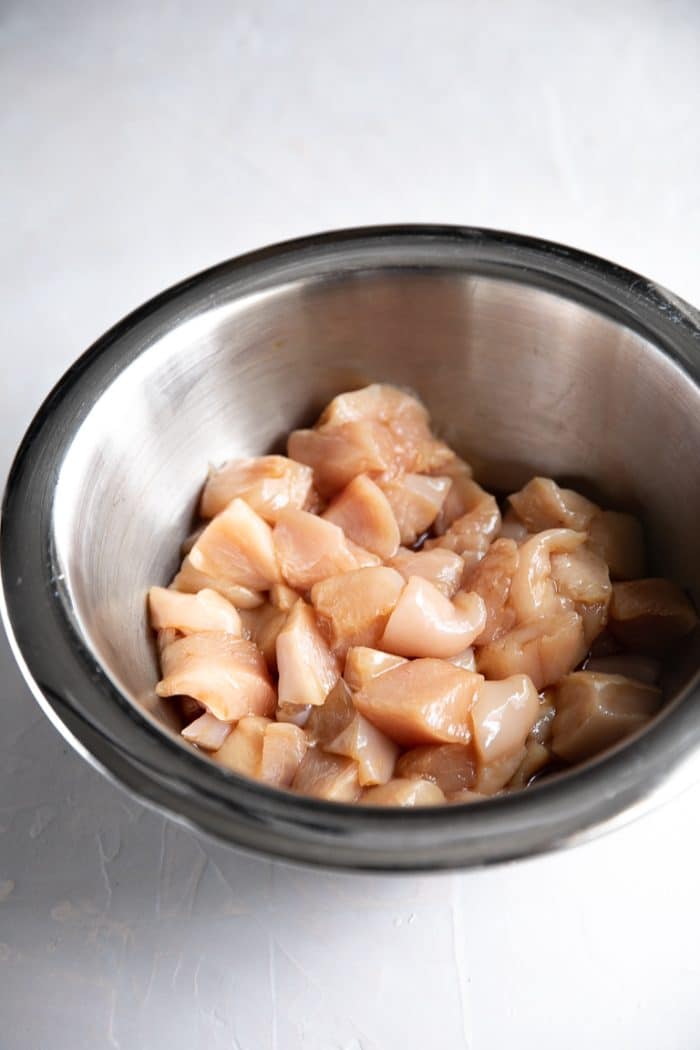
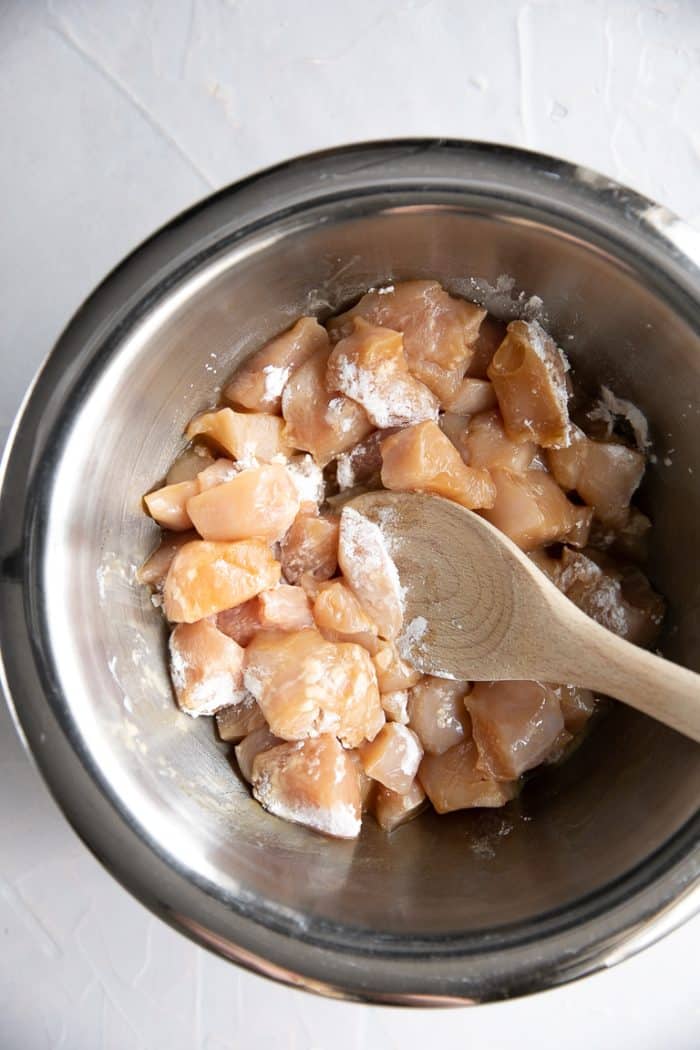
Kung Pao Chicken Ingredients
For the full list and amounts of ingredients, scroll down to the recipe card at the bottom of the page.
This Kung Pao Chicken Recipe requires several ingredients common to most stir-fries (fresh ginger and garlic) plus a handful of ingredients that make this recipe unique.
- Light soy sauce – Most common, light soy sauce is typically saltier and thinner than dark soy sauce due to the absence of sugars.
- Dark soy sauce – Richer and less salty than light soy sauce. Often, dark soy sauce will be sweetened with sugar or molasses. Dark soy sauce helps give a richer, more flavorful sauce.
- Chinese Black Vinegar – Available online or at your local Asian supermarket, Chinese black vinegar looks and tastes somewhat similar to balsamic vinegar. Make sure when you’re shopping to read the label and only use Chinese black vinegar (not Taiwanese black vinegar, for example). Easily substitute with rice wine vinegar, distilled white vinegar, or yes, even balsamic vinegar.
- Chinese Shaoxing wine – An essential ingredient to nearly all Chinese stir-fry recipes, Shaoxing wine adds depth and intensity to the Kung Pao sauce we all love to love. You don’t need a lot, but it is definitely a stand-out ingredient in terms of overall flavor. Substitute Shaoxing wine with Dry Sherry.
- Hoisin Sauce – made from ingredients such as soybeans, fennel seeds, garlic, and Chinese Five Spice, Hoisin Sauce intensifies the already amazing flavors in Kung Pao Chicken.
- Dried Red Chillies – Common to many Chinese stir-fries, dried chilies are an easy way to add extra spice without much extra work. If you’re sensitive to spicy foods, add half the recommended amount of dried red chilies (or none at all). The heat level of these dried red chilies varies greatly, making them somewhat unpredictable. You may also add them to the dish but not eat them. You’ll get all the flavor benefits, minus the attack on your taste buds.
What are Sichuan Peppercorns (Szechuan pepper)?
Sichuan Peppercorns are what make this dish uniquely Kung Pao Chicken. Unlike a hot and spicy chili powder, Sichuan Peppercorns have a somewhat tingling or numbing effect rather than a burning hot effect on the mouth. Pre-toasted and ground peppercorns are the best option; otherwise, you’ll want to toast them in a dry pan over medium-low heat just until fragrant and then grind them. You can find them at Asian grocery stores and supermarkets, Whole Foods, or online.
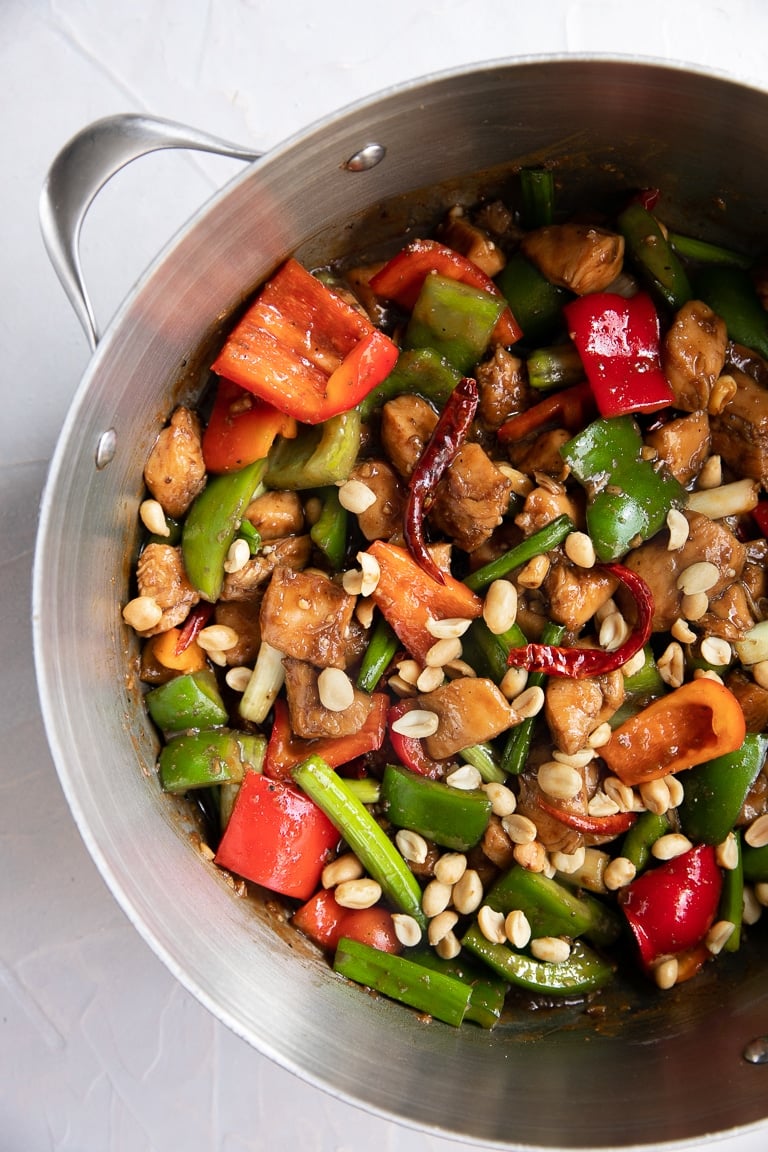
How to Make Kung Pao Chicken
There are three main parts when making this Kung Pao Chicken Recipe – the chicken, the sauce, and putting it all together.
1. Prepare the chicken and marinade – Mix the chicken with the soy sauce and cornstarch in a medium mixing bowl. Cover and allow the chicken to marinate for at least 10 minutes.
2. Prepare the Kung Pao sauce – As the chicken marinates, whisk together the cornstarch with the soy sauce until completely dissolved. Then add the remaining sauce ingredients – Chinese black vinegar, wine, hoisin sauce, brown sugar, and low-sodium chicken broth – and set aside.
3. Brown the chicken – Brown the chicken in a HOT skillet or wok. Once the edges are golden brown, immediately remove to a clean plate and set aside. The chicken may not be cooked through, but that’s ok.
4. Saute the aromatics – To the same skillet over medium heat, cook the ginger, garlic, and chilies, stirring constantly, for approximately 30 seconds. Ginger likes to stick, so make sure to add extra oil to your skillet. Add the white parts of the green onions, the red and green bell peppers, and the Sichuan peppercorns to the aromatics and continue to cook for 2-3 minutes.
5. Put it all together – Return the chicken to the skillet and pour the Kung Pao sauce directly into the pan. Mix well and bring the sauce to a low boil. Reduce heat to low and continue to cook until sauce thickens. Stir in the green parts of the green onions and add the peanuts.
What to serve with Kung Pao Chicken
Serve Kung Pao chicken with white or brown rice, as it is the perfect complement to the dark and flavorful sauce. That said, I have also been known to enjoy this recipe with rice noodles or even zucchini noodles for a delicious, veggie-filled lower-carb version!
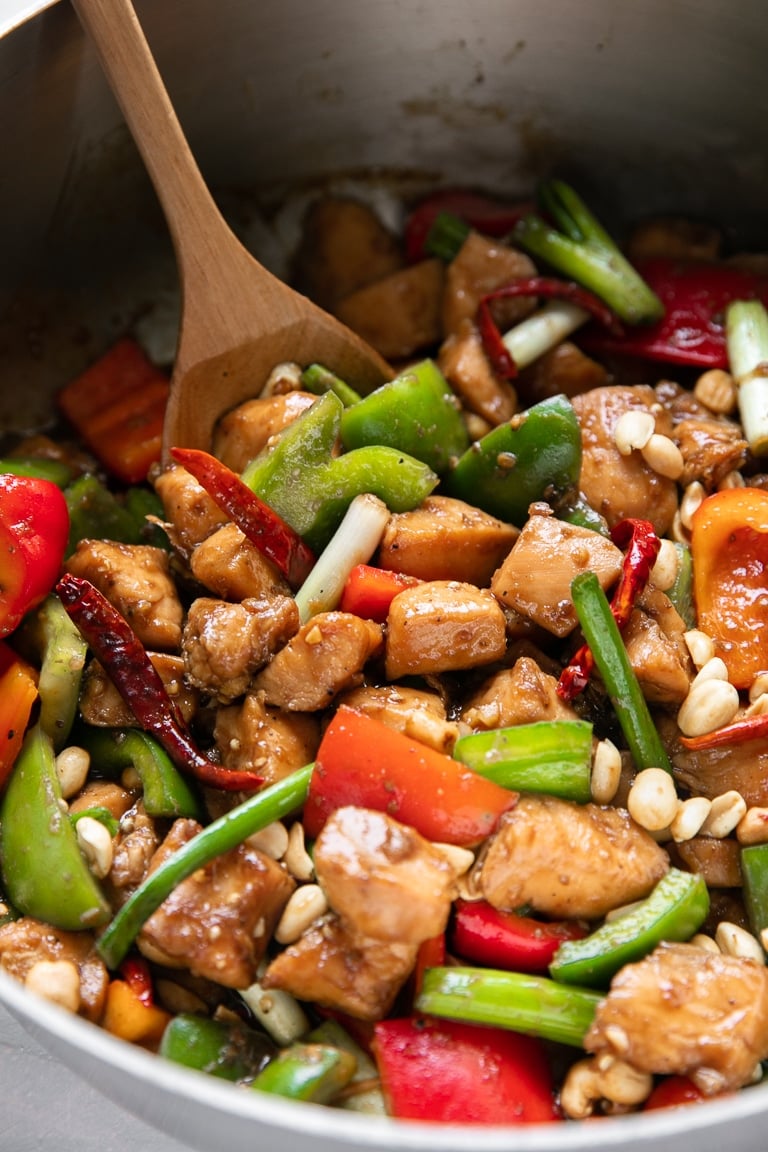
Chicken Breasts or Chicken Thighs?
Technically, you could use either chicken thigh or chicken breast meat for this recipe. Chicken thighs will produce juicier pieces of meat with better overall flavor, but boneless skinless chicken breasts are lower in fat and calories. I chose to go with chicken thighs for this round of Kung Pao chicken.
Tip: If you do decide to use breast meat, I recommend marinating for at least 30 minutes, or trying the “velveting” technique described below.
What is Velveting?
“Velveting” is a Chinese cooking method often used in stir-fry recipes to help tenderize meat and lock in the juices, keeping the meat moist. Although this cooking technique could be used with all types of meat, it is most commonly used with chicken breast due to its low-fat content.
How to “velvet” chicken?
- Chop your chicken into small cubes and transfer them to a medium mixing bowl. For every 1 pound of chicken, mix with one (well-whisked) egg white, one tablespoon of cornstarch, and rice vinegar. Keep the chicken stored in the refrigerator for at least 30 minutes, then bring a large pot of water to a boil. Add approximately one tablespoon of oil to the boiling water.
- When you’re ready to cook your chicken, reduce the boiling water to a simmer and add the chicken. Cook for just 1 minute– the chicken will turn completely opaque on the outside but remain uncooked in the middle.
- Finally, remove the chicken from the boiling water and drain well before adding it to any stir-fry.
Please note: I did not “velvet” the chicken in this recipe as I cooked with chicken thigh meat.
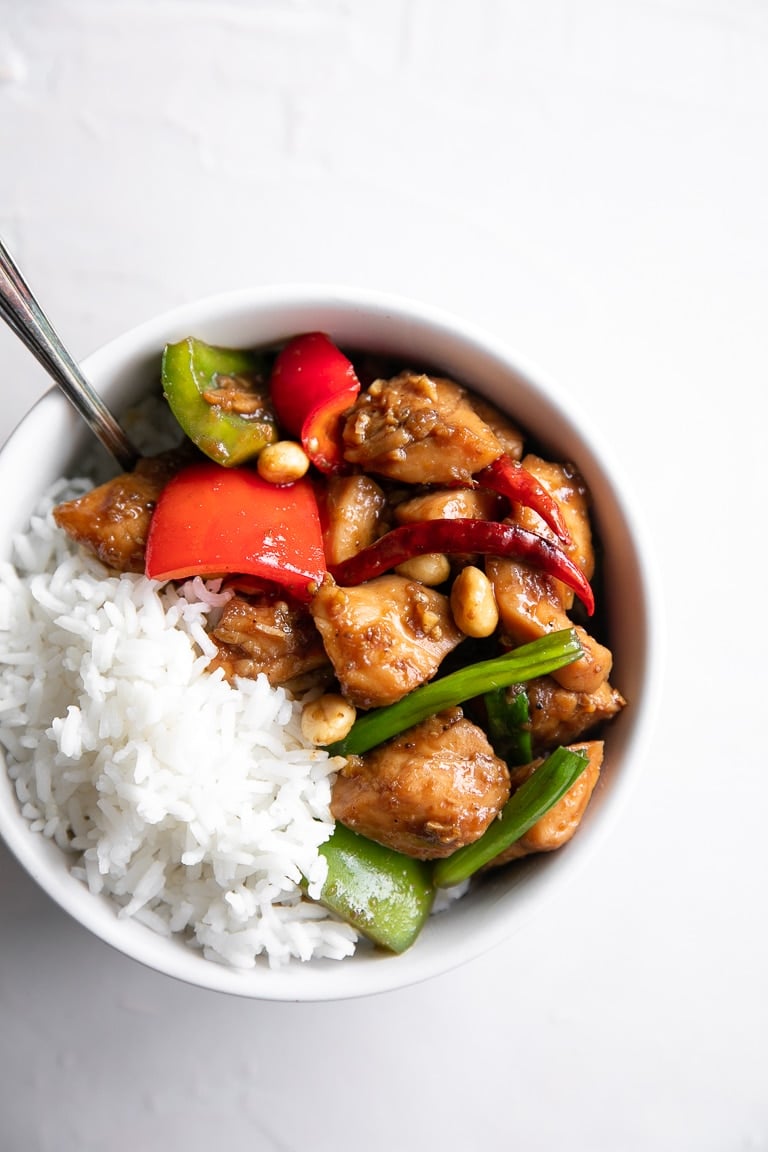
Storage and Leftovers
Keep leftovers stored in an airtight container in the refrigerator for up to 4 days. Reheat in a large skillet with a little oil or in the microwave until heated through.
More Asian Recipes,
- Bok Choy Recipe
- Asian Garlic Noodles
- Korean Glass Noodle Veggie Stir Fry
- Shrimp and Asparagus Stir Fry
- Korean Fried Chicken
- Moo Goo Gai Pan Recipe
If you try making this Kung Pao Chicken Recipe, please leave me a comment and let me know! I always love to hear your thoughts.
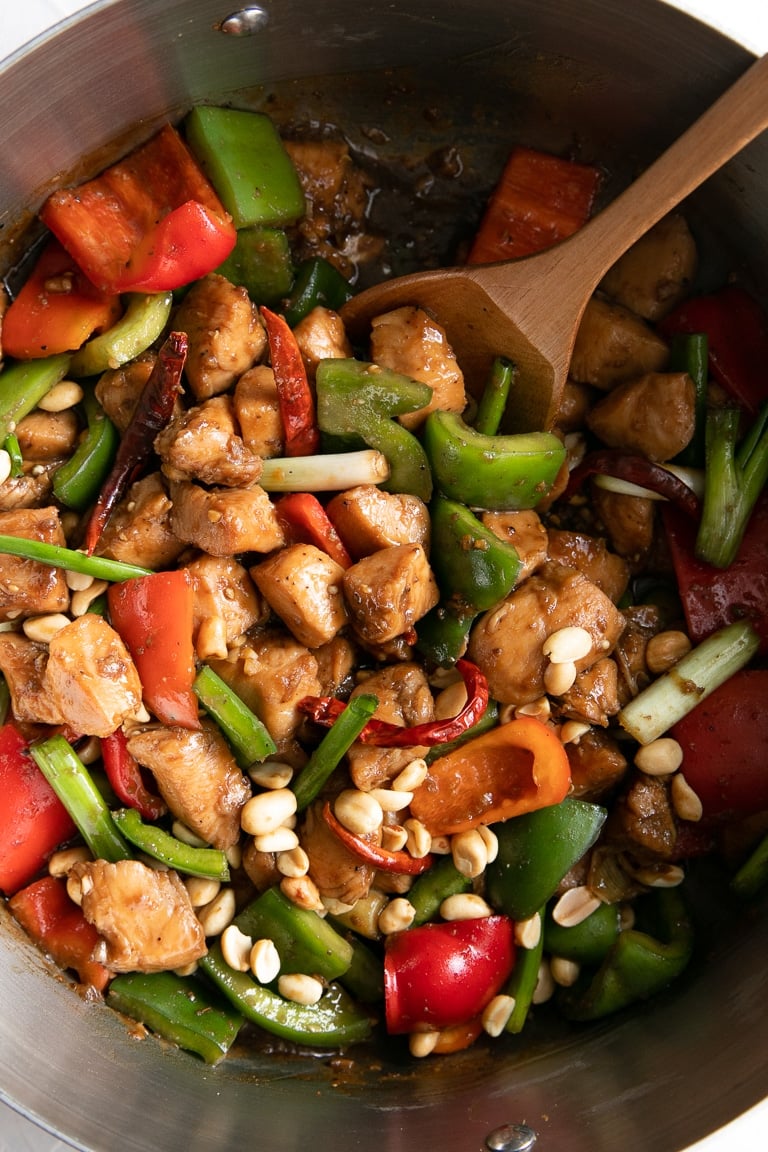
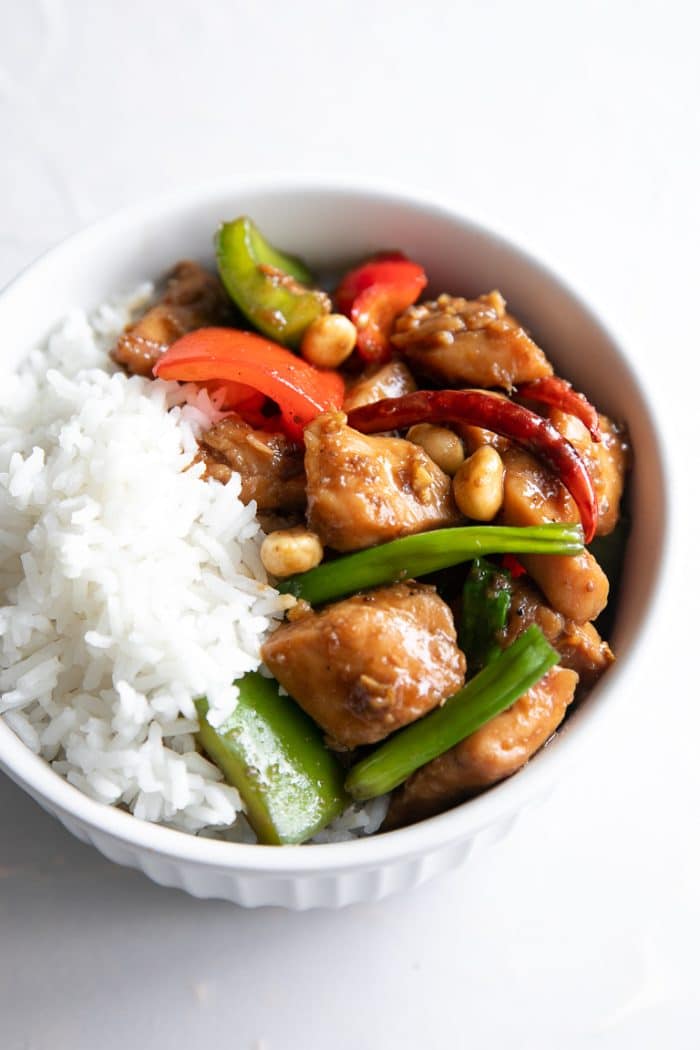
Kung Pao Chicken Recipe
Ingredients
For the Chicken
- 2 pounds boneless skinless chicken thighs, (or breasts) cut into 1-inch cubes
- 2 tablespoon soy sauce
- 2 teaspoon cornstarch
For the Sauce
- 2 teaspoon cornstarch
- 4 tablespoon light soy sauce
- 2 tablespoon dark soy sauce, (or light soy sauce)
- 2 tablespoon Chinese black vinegar , (see notes)
- 2 tablespoon Chinese Shaoxing wine, or dry sherry
- 3 tablespoon hoisin sauce
- 2 tablespoon brown sugar
- ¾ cup low-sodium chicken broth, or water
For the Stir-Fry
- 2 tablespoon vegetable oil, divided
- 5 cloves garlic, minced
- 2 teaspoon fresh ginger, minced
- 8-10 dried red chilis, more or less to taste
- 1 red bell pepper, seeded and diced
- 1 green bell pepper, seeded and diced
- 5 green onions, green and white parts divided
- 2 teaspoon sichuan peppercorns, lightly toasted and ground (optional)
- ½ cup peanuts, roasted unsalted
Instructions
- Prepare the Chicken. Combine all ingredients for the chicken (cubed chicken pieces, soy sauce, and cornstarch) in a medium mixing bowl. Mix well to evenly coat the chicken with the soy sauce and cornstarch. Cover and allow the chicken to marinate for at least 10 minutes, time permitting.
- As the chicken marinates, prepare the sauce. In a medium bowl whisk together the cornstarch with the soy sauce until completely dissolved. Whisk in the remaining ingredients (Chinese black vinegar, wine, hoisin sauce, brown sugar, and low-sodium chicken broth) until completely combined. Set aside.
- Heat a large skillet or wok over high heat. Add 2 tablespoons of the cooking oil to the pan and allow it to get nice and hot (olive oil is not recommended). Add the chicken to the skillet, cooking for approximately 5 minutes or until edges are golden brown. Stir often. Remove chicken to a clean plate and set aside.
- Add the remaining 2 tablespoons of oil to the skillet over medium-high heat. Add the garlic, ginger, and chilies. Cook for approximately 30 seconds, stirring continuously.
- Stir in the white parts of the green onions with the red and green bell peppers. Mix well to combine. Cook for approximately 1-2 minutes, stirring often. Mix the ground Sichuan peppercorns in with the peppers and return the chicken to the skillet. Continue mixing until everything is combined.
- Give the sauce a final stir and pour directly over the chicken and peppers. Stir continuously and bring the sauce to a low boil. You will notice the sauce start to thicken. Reduce heat and continue to cook, stirring continuously, until desired consistency is reached.
- Stir in the green parts of the green onions and the peanuts, mixing well to combine. Serve with your favorite rice or noodles. Enjoy!
Notes
- Chinese Black Vinegar- available at many Asian supermarkets, you can also find it on Amazon. Substitutes include rice wine vinegar (1.5 tbsp) or distilled white vinegar (1 tbsp). Be sure to purchase a Chinese Black Vinegar that is “made in China” for best results.
- Sichuan peppercorns– these are optional but recommended if you can get your hands on some. They are not spicy. If you can find pre-toasted and ground peppercorns, that is the best option. Otherwise, you’ll want to toast them in a dry pan over medium-low heat just until fragrant and then grind them.
- If you’re sensitive to spicy foods, add half the recommended amount of dried red chilies (or none at all). The heat level of these dried red chilies varies greatly, making them somewhat unpredictable.
- To make this recipe gluten-free – use a gluten-free soy sauce, hoisin sauce, and substitute the Shaoxing wine with dry sherry.
- Originally published February 11, 2019
Nutrition
Nutrition information is automatically calculated, so should only be used as an approximation.
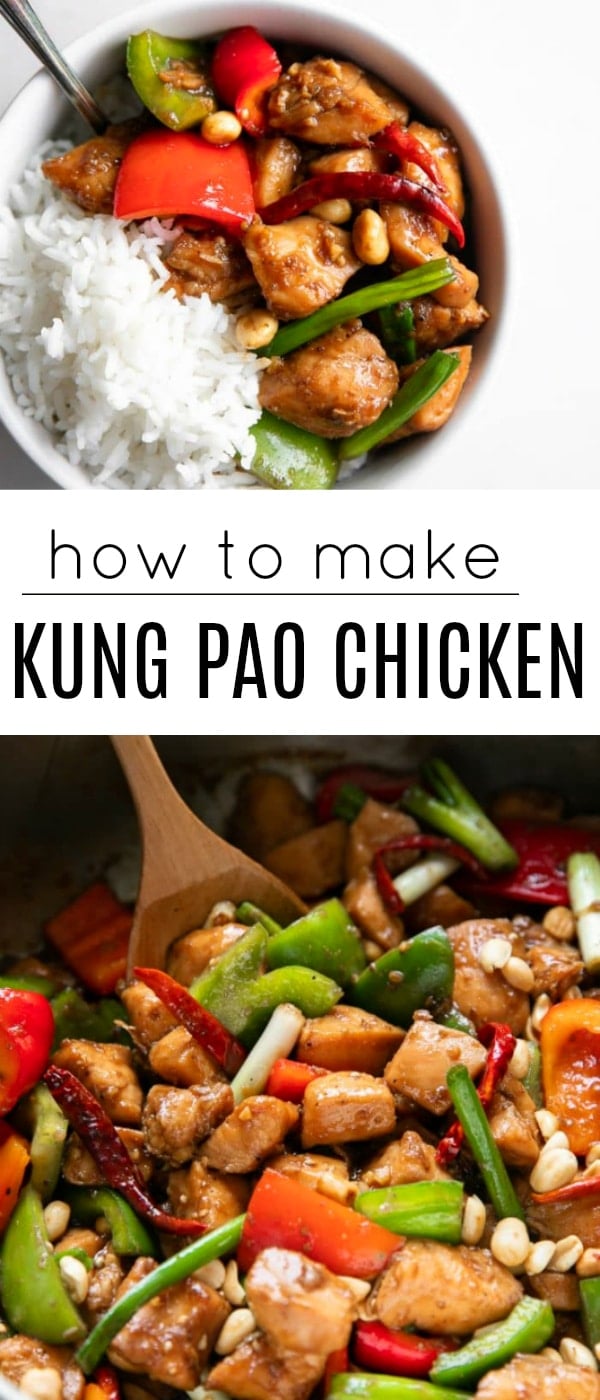
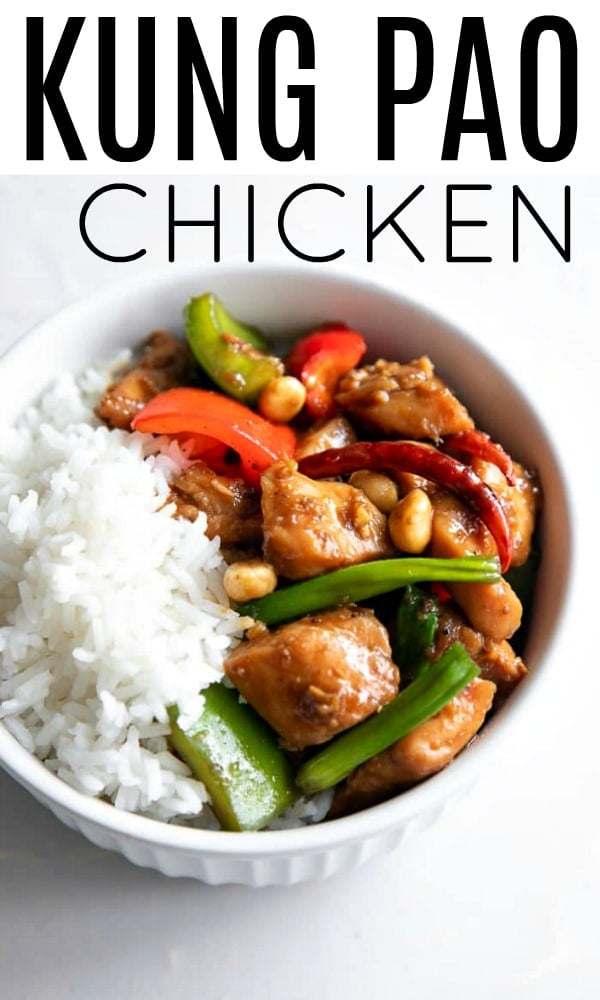
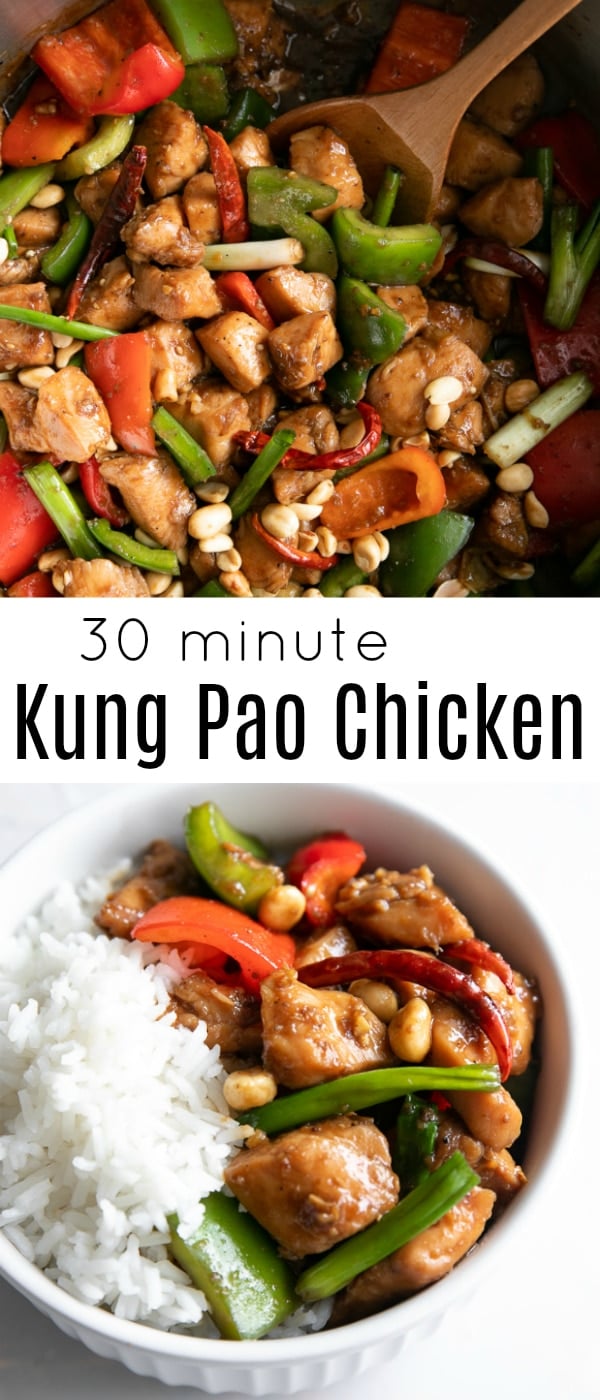

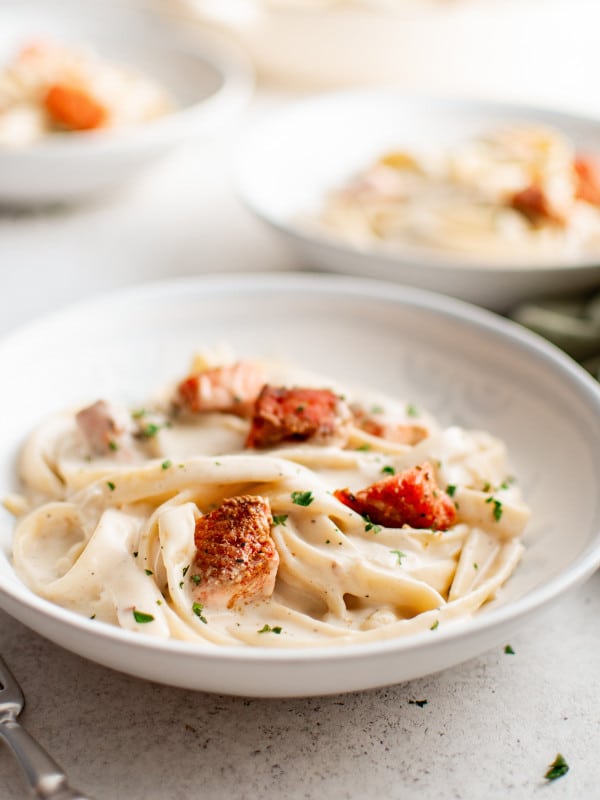
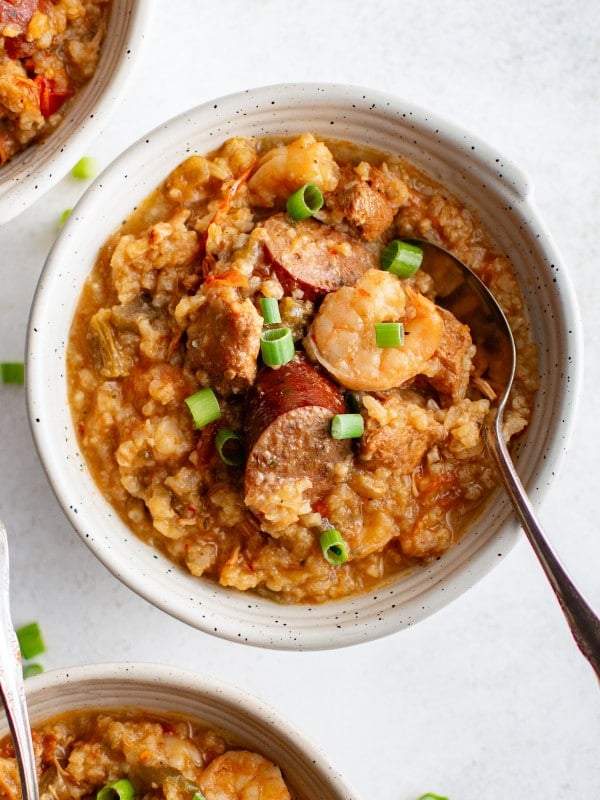
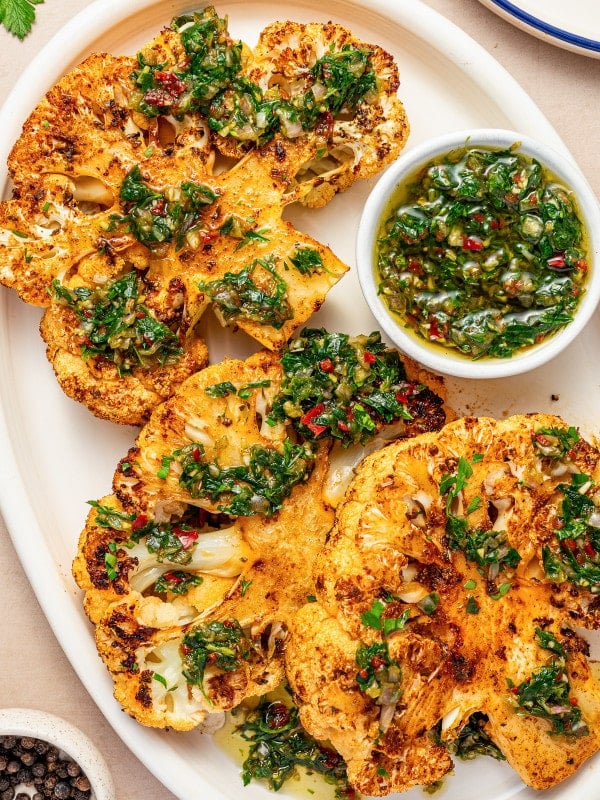









Lately I have been so interested in Chinese cuisine and this recipe came to me as the next delicious dinner idea! Simply bursting with flavour – my whole family loved it! Hope to see more of such soon:)
Thanks Natalia, I am glad your family loved it 🙂